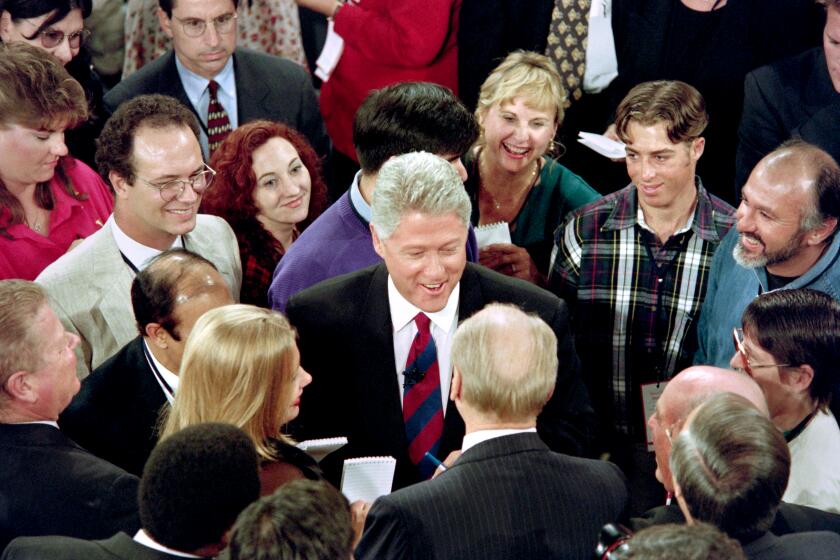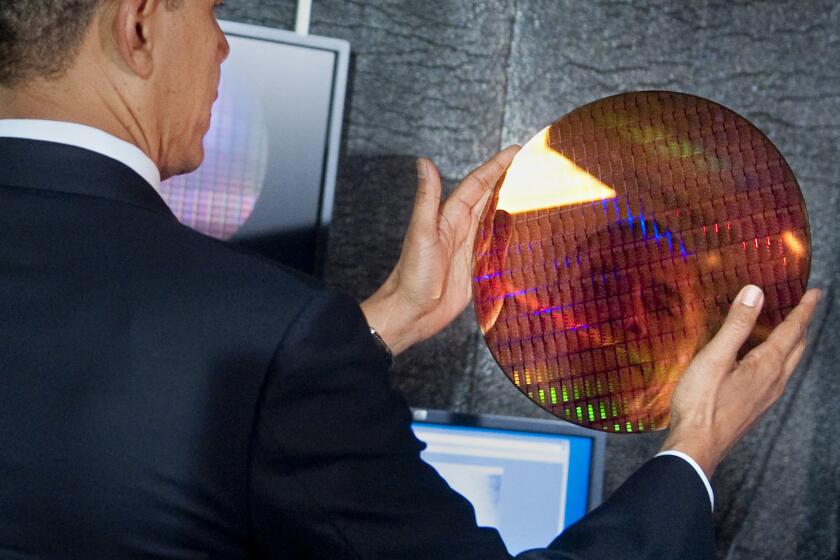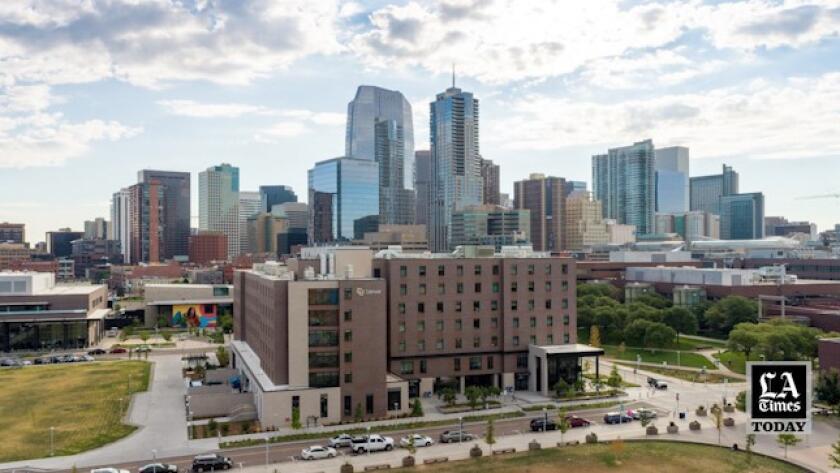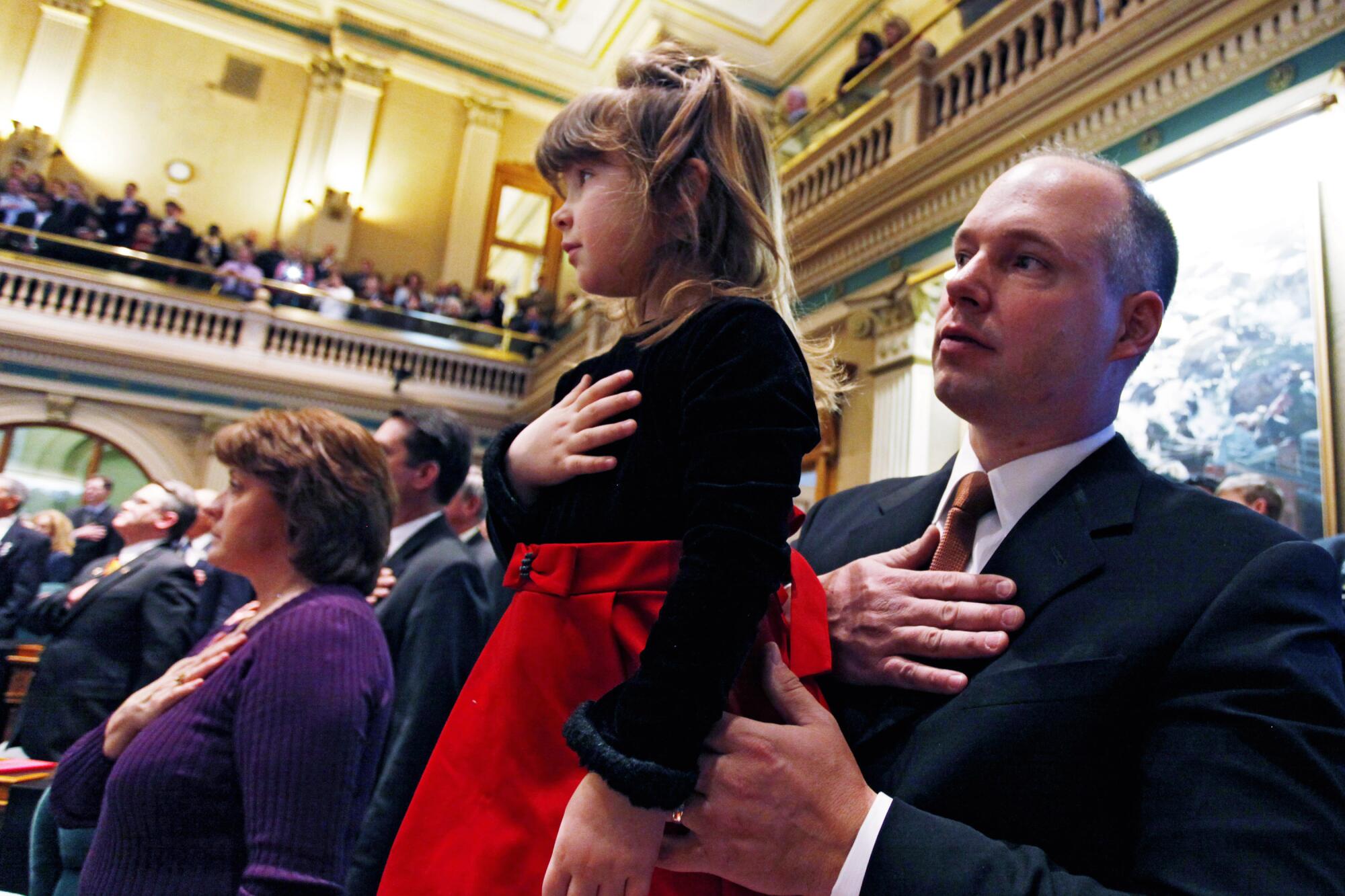
- Share via
DENVER — Kevin Priola was a Republican before he could even vote.
Inspired by Ronald Reagan, he preregistered with the GOP at age 17. He joined the College Republicans at the University of Colorado in Boulder — a true act of faith in that liberal stronghold — and was elected to the Legislature in 2008, where he’s served ever since.
But Priola slowly grew estranged from the GOP, seeing it as more authoritarian than conservative, and last August he became a Democrat.
“I couldn’t stomach it,” Priola said of his old party, “and associate with that style and brand of politics.”
He’s hardly alone.
For much of its history, the West was Republican ground. Today, it’s a bastion of Democratic support, a shift that has transformed presidential politics nationwide. Mark Z. Barabak explores the forces that remade the political map in a series of columns called “The New West.”
In the last two decades, the Republican ranks in Colorado have shrunk drastically, to just a quarter of registered voters, as the once reliably red state has turned a distinct shade of blue.
The transformation is part of a larger political shift across the West: along the Pacific Coast, through the deserts of Nevada and Arizona, into the Rocky Mountain states of Colorado and New Mexico. Once a Republican bulwark, the region has become Democratic bedrock. That, in turn, has reshaped presidential politics nationwide.
With a big chunk of the West — California, Colorado, New Mexico, Oregon, Washington — seemingly locked up, Democrats are free to focus more heavily on the perennial battlegrounds of the Midwest and venture into once-solidly Republican states such as Georgia.
Over the next several months I’ll visit several of those western states to explore the forces that remade the political map.
Through money and lavish attention, Bill Clinton colored California a lasting shade of blue, dramatically reshaping the nation’s presidential map in the process.
The changes didn’t just happen, like the snow embroidering the Rockies in winter, or the runoff that swells Colorado’s icy rivers in the spring. It took money, strategy, demographic changes and, not least, a sharp rightward turn by Republicans.
The series, called “The New West,” begins in Colorado, as no state in the region has changed its partisan coloration as emphatically over the last two decades. “From a western swing state, it has become a Democratic stronghold,” said pollster Floyd Ciruli, who’s sampled public opinion in Colorado for more than 40 years.
In 2004, Democrats essentially gave up and wrote the place off; they’ve carried Colorado in every presidential contest since. In 2020, Joe Biden romped to a 13-point win over President Trump, the largest Democratic victory here in more than half a century.
::
Patrick Winkler helped change the political complexion of Colorado.
In the last 20 years, the state has gained more than 1.3 million residents, most settling — like Winkler — in Denver or the suburbs strung endlessly along the Rocky Mountains’ Front Range.
Winkler moved three years ago from California, in part because the 29-year-old real estate agent wanted to own a home and knew his money would go further in Colorado.
The political views he imported are typical of Winkler’s youthful cohort, which tends toward left of center. He voted for Biden in 2020 and Democratic Gov. Jared Polis last November, largely because of his contempt for the GOP — too narrow-minded, in Winkler’s view — and a particular dislike for Donald Trump.
“It was less a personal opinion about the candidates,” said Winkler, who wound up buying a three-story townhouse overlooking a park near downtown Denver. “It was about the general outlook of the parties and what they stand for.”
The influx of young arrivals — many, like Winkler, from California — is not a new phenomenon. Colorado has long been a magnet for twenty- and thirty-somethings, drawn by the state’s mouthwatering scenery, outdoorsy lifestyle and, more recently, its thriving tech and service industries.
What has changed are those who’ve found their home in the Democratic Party: They are younger, more affluent, better educated, and more liberal on issues such as abortion and gay rights.
In short, Democrats are now much more in tune with Colorado, one of the best-educated and socially liberal states in the country, as the Republican base has gotten older, less educated, more evangelical and more Trumpy.
When Lori Weigel moved to Denver in 1997, she recalled, “the Broncos always won and the Republican Party always won.”
“Now,” the GOP strategist lamented, “we have a losing football team and, statewide, a losing Republican brand.”
::
Polis sits in his spacious office in the state Capitol, his 13-year-old terrier mix, Gia, curled in a chair by his side. His dress — gray suit and a purple polo shirt with matching Nike sneakers — is a mash-up of tech bro and standard-issue government executive.
At 47, Polis has been a multimillionaire for more than two decades. He made a fortune in the frothy days of the commercial internet, founding, among other flourishing businesses, an online flower delivery service.
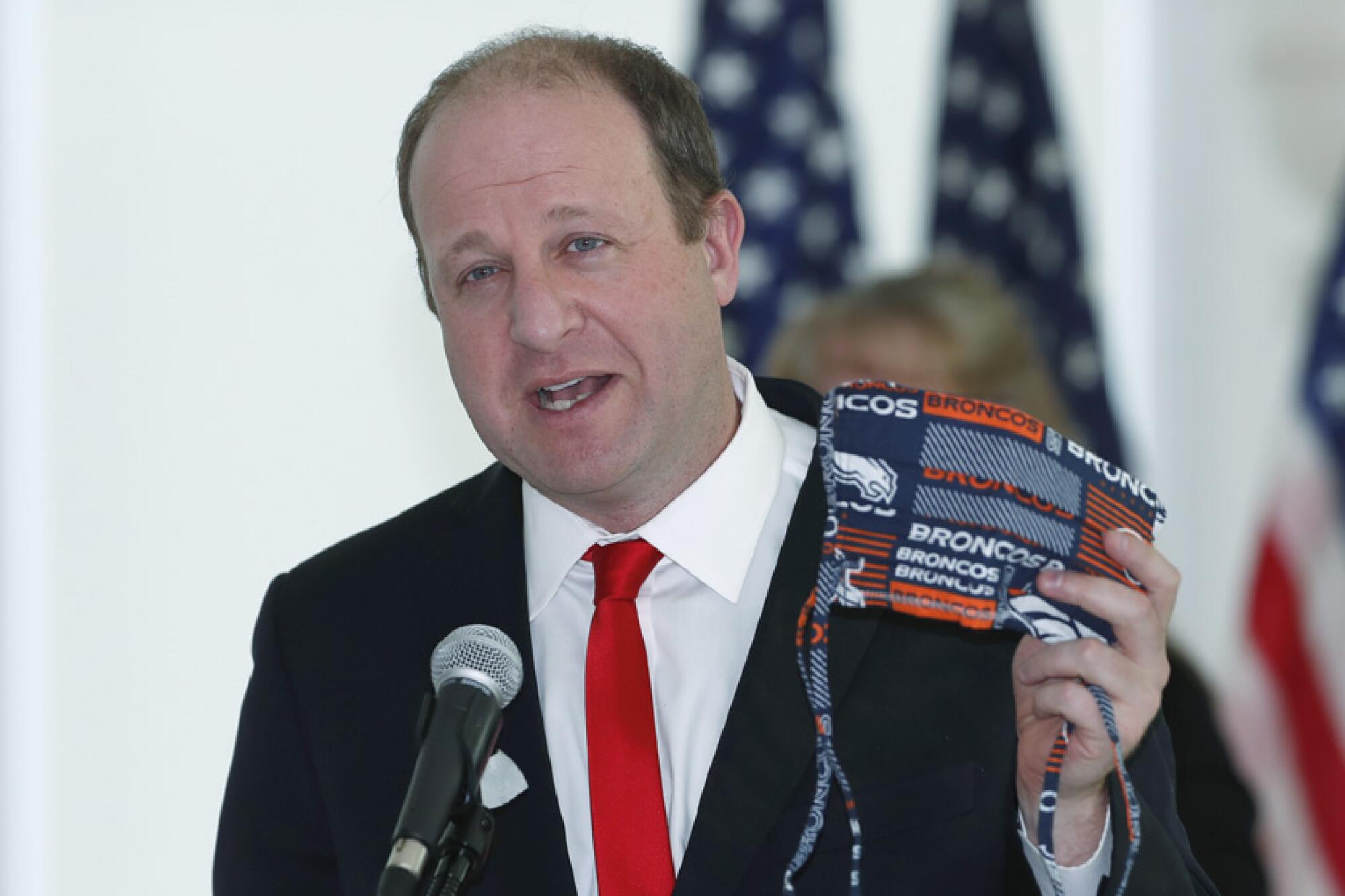
Before seeking elected office, Polis played a key role in Colorado’s makeover as one of the “gang of four”— a quartet of rich donors who spent millions, starting in the early 2000s, building a political support system and recruiting and funding Democratic candidates.
The effort was vital to stocking the party’s bench and breaking the GOP’s grip on the statehouse.
Polis, however, downplays the import in Colorado’s change from red to blue. After 10 years in Congress and entering his second term as governor, following overwhelming reelection in November, the Democrat would much rather talk about policy than his role as a partisan Mr. Moneybags.
Colorado’s shift, he said, is “not due to funding.” And that’s true to a large extent, though the cash infusion certainly didn’t hurt.
More important is the branding of Democrats in Colorado as the party of the center.
“Coloradans tend to be very moderate. Anyone who puts personal ideology over solutions is going to run afoul of the Colorado electorate.”
— Colorado Democratic strategist Craig Hughes
For the record:
12:14 p.m. March 27, 2023An earlier version of this post misidentified former Colorado Democratic Party chairman Chris Gates as Chris Hughes, and Democratic strategist Craig Hughes as Craig Gates.
The state is “not a playground for the fringe left,” said Chris Gates, a former Colorado Democratic Party chairman. “It’s not a state like Maryland, where whoever the Democrat is they’ll win.”
Polis, who boasts of cutting taxes and wielding a light hand during the COVID-19 pandemic, is the latest in a string of statewide Democratic officeholders who’ve bucked the national party’s leftward shift.
There was the cowboy-hatted U.S. Sen. Ken Salazar, who made bipartisanship a calling card in Washington. Before Polis came the relatively centrist Govs. Bill Ritter, an ex-prosecutor, and John Hickenlooper, a former oil company geologist.
Meantime, Republicans offered up candidates from the right-wing tea party movement and fire-breathers like the anti-immigration crusader Tom Tancredo.
“Coloradans tend to be very moderate,” said Democratic strategist Craig Hughes. “Anyone who puts personal ideology over solutions is going to run afoul of the Colorado electorate.”
For Polis, who disdains hardliners in both parties, ideology is something of a four-letter word. He’s quick to point out that Democratic registration has fallen in Colorado alongside that of the GOP.
(Though not nearly as much. Unaffiliated voters are the majority at 45%, followed by Democrats at 28% and Republicans at 25%; for decades the parties were at rough parity, with about a third of the electorate each.)
Colorado Republicans have fared worse than Democrats, Polis said, because GOP candidates have focused too much on culture-war issues such as abortion and gay rights and plunged down rabbit holes like Trump’s bogus claims of a stolen election. (Earlier this month, the Colorado Republican Party chose an election-denier as its chairman.)
“Any candidate who wants to win in Colorado has to talk about and have solutions for the issues that matter most to everyday Coloradans,” Polis said, ticking those off: education, affordable housing, traffic, congestion.
“They’re going to focus on improving the quality of life,” Polis said of the state’s what-have-you-done-for-me-lately voters. “Not those distractions on the left or the right.”
::
Casi Smigelsky works in tech sales in Denver and, like most Coloradans, belongs to no political party.
The 33-year-old considers herself a fiscal conservative and is not a Biden fan — too much of a relic, she says of the 80-year-old president. But Smigelsky has an even harsher view of the GOP, which she sees as still overly beholden to Trump.
“They’ve become a party of hate,” she said, “and a party of taking rights away.”
Though Smigelsky could see herself voting for a moderate Republican for president, if one somehow won the nomination in 2024, there is no way she will ever cast a ballot for Trump, the early GOP front-runner.
“Absolutely not,” she said. “Absolutely never.”
Democrats drawn by Oregon’s tech jobs and nature have made the state solidly blue. It’s part of a transformation that remade the West and recast the fight for the White House.
Republicans were in decline in Colorado well before Trump bulled his way into the White House. The former president’s deceit and the mayhem he spawned hastened the free fall.
Dick Wadhams, a fourth-generation Coloradan and longtime GOP campaign consultant, said it’s hard these day for Republicans to even get an impartial hearing from voters, regardless of a candidate’s personal qualities and beliefs.
He imagines typical Colorado voters saying to themselves, “‘We’re not going to entrust these offices to the Republican Party, even if these individuals look like they’re solid, because the party is crazy overall.’”
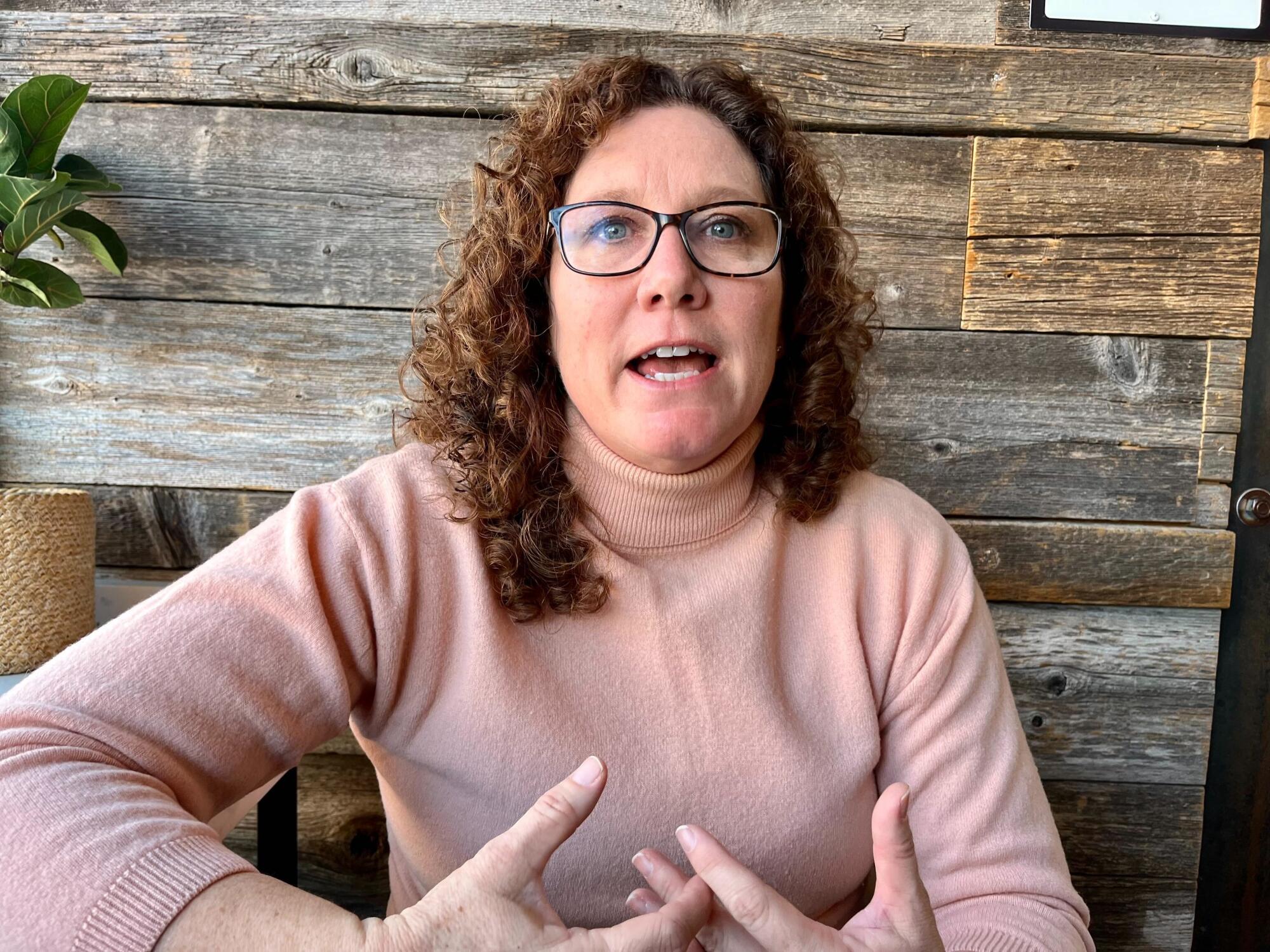
Pam Anderson can speak to that firsthand.
The former elections chief in suburban Jefferson County, Anderson describes herself as socially moderate, if not liberal, and has no use for those she calls political bomb-throwers.
Anderson was featured on Time magazine’s cover last October as one of “the defenders” fighting to save democracy after she bested a Trump loyalist and election denier to win the GOP nomination for secretary of state, the overseer of Colorado’s balloting.
“I was a vocal opponent of everything Trump said about elections,” Anderson said over the morning buzz at a Denver coffee bar. “Everything.”
Still, she said, opponents ran “millions of dollars in commercials saying I was too MAGA for Colorado.” She leaned back, as if still reeling. “I couldn’t raise enough money to combat that.”
Anderson shrugged. She threw up her hands.
She lost by double digits, gone in a tide that delivered Democrats all four statewide offices and underscored a sea change that has remade Colorado and dramatically refashioned the West.
- Share via
Watch L.A. Times Today at 7 p.m. on Spectrum News 1 on Channel 1 or live stream on the Spectrum News App. Palos Verdes Peninsula and Orange County viewers can watch on Cox Systems on channel 99.
More to Read
Get the latest from Mark Z. Barabak
Focusing on politics out West, from the Golden Gate to the U.S. Capitol.
You may occasionally receive promotional content from the Los Angeles Times.

